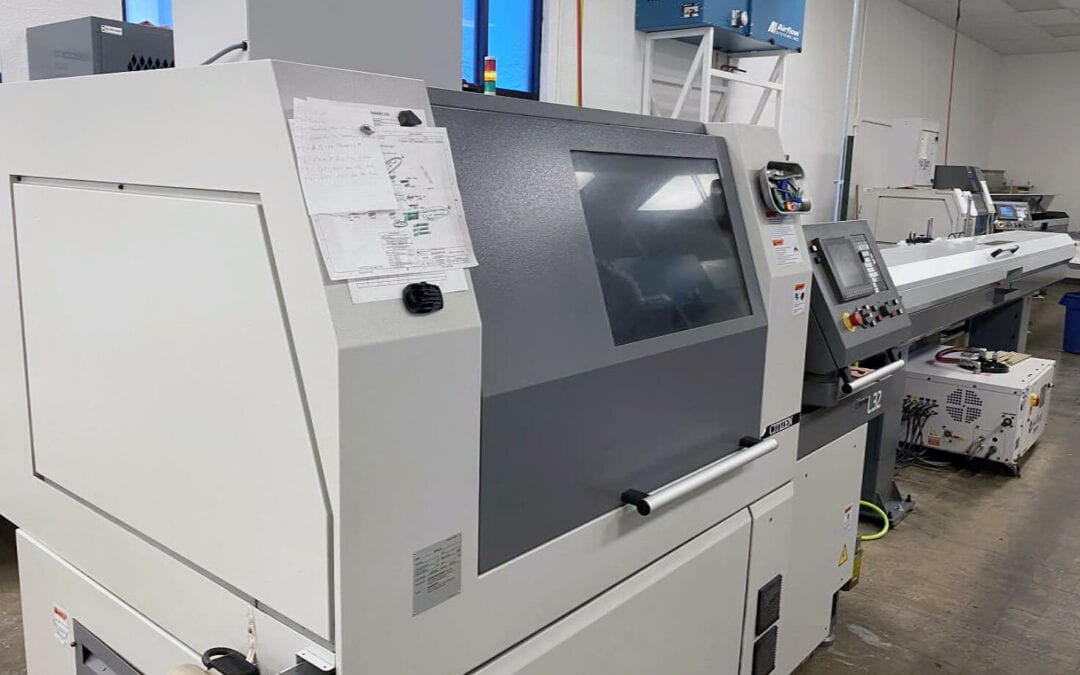Swiss-Type Lathes: Precision and Efficiency Redefined
Swiss-type lathes, also known as Swiss screw machines or sliding headstock lathes, have revolutionized the manufacturing industry with their cutting-edge technology and exceptional precision. Originally developed in Switzerland for watchmaking, these advanced machines have found widespread applications in various industries, including aerospace, medical, automotive, and electronics. In this blog post, we’ll explore the advantages of Swiss-type lathes and why they are considered a game-changer in the world of precision machining.
Unmatched Precision
One of the most significant advantages of Swiss-type lathes lies in their unparalleled precision. The design of these machines allows for precise and intricate machining of small, complex parts with tight tolerances. The main spindle remains stationary while the workpiece moves through the tooling, resulting in minimal deflection and enhanced accuracy. This precision is particularly crucial for industries where even the tiniest deviations can lead to critical failures or performance issues.
High-Speed Machining
Swiss-type lathes excel in high-speed machining, thanks to their sliding headstock design. The rotating guide bushing provides excellent support to long, slender workpieces, allowing for faster and more efficient machining. As a result, these lathes can significantly reduce cycle times and increase productivity, making them an ideal choice for mass production of small components.
Simultaneous Multi-Axis Machining
Modern Swiss-type lathes often come equipped with multiple axes, allowing for simultaneous machining on multiple sides of the workpiece. This capability enables complex geometries and intricate features to be machined in one setup, eliminating the need for additional operations and reducing production time and costs.
Excellent Material Utilization
Swiss-type lathes are known for their exceptional material utilization. The design of the machine minimizes the distance between the guide bushing and the cutting tool, reducing material waste during the machining process. This efficiency is especially valuable when working with expensive or difficult-to-machine materials, as it helps reduce overall material costs and enhances the sustainability of the manufacturing process.
Enhanced Tool Life and Cost Savings
The stationary main spindle and the guide bushing in Swiss-type lathes result in reduced cutting forces and less tool wear. As a result, tool life is extended, leading to fewer tool changes and decreased downtime. This not only improves the overall machining process but also translates into substantial cost savings in tooling expenses.
Versatility and Flexibility
Swiss-type lathes are incredibly versatile machines capable of handling a wide range of materials, including metals, plastics, and composites. Additionally, they can accommodate parts of varying lengths and diameters, offering great flexibility in manufacturing small and complex components with different specifications.
The Preferred Choice for Precision Machining
Swiss-type lathes have rightfully earned their place as the preferred choice for precision machining in various industries. Their unmatched accuracy, high-speed capabilities, and simultaneous multi-axis machining make them indispensable for the production of intricate and small parts. With these advanced machines, manufacturers can achieve exceptional productivity, cost savings, and enhanced quality, leading to a competitive edge in today’s challenging market. As technology continues to evolve, Swiss-type lathes are expected to further revolutionize precision manufacturing, driving innovation and progress in the industry.

